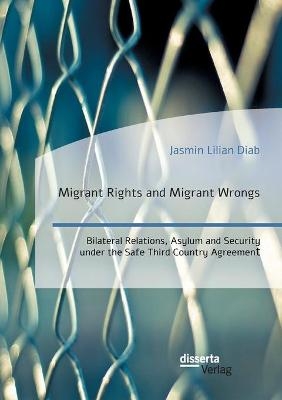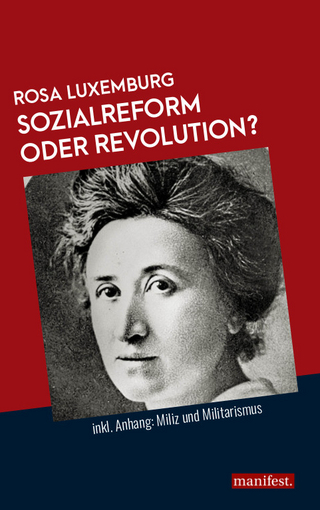
Migrant Rights and Migrant Wrongs. Bilateral Relations, Asylum and Security under the Safe Third Country Agreement
disserta Verlag
978-3-95935-570-4 (ISBN)
Dr. Jasmin Lilian Diab (she/her) is a Canadian-Lebanese writer, researcher, university professor, editor and consultant in the areas of Migration, Gender and Conflict Studies. She currently serves as a tenured Assistant Professor of Migration Studies at the Lebanese American University's Department of Social Sciences. In previous roles, she served as the Refugee Health Program Coordinator at the American University of Beirut's Global Health Institute (GHI), as well as the MENA Regional Focal Point on Migration of the UN General Assembly-mandated UN Major Group for Children and Youth. She is a Senior Consultant on Refugee and Gender Studies at Cambridge Consulting Services, a Research Affiliate at the Centre for Refugee Studies at York University, a Scholar in Forced Displacement at University of Ottawa's Human Rights Research and Education Centre, and a Junior Fellow and Program Lead at the Global Research Network's 'War, Conflict and Global Migration' Think Tank. She holds a PhD in International Relations and Diplomacy with an emphasis on Asylum, Refugees and Security from the esteemed Center for Diplomatic and Strategic Studies (CEDS) of the School of Advanced International and Political Studies at INSEEC U. in Paris, and is the recipient of the CLS 2021 Bursary Award to complete her Postdoctoral research on 'Bridging the Gap between Social Protection and the Humanitarian Response in Times of COVID-19: The Case of Lebanon's Refugees and Good Practices' at LAU-University of Oxford's Centre for Lebanese Studies.
Textprobe: Kapitel A Recent Timeline of Migration to North America: This section will address the most relevant historical and policy moments in both the United States' and Canada's migration history. The timeline will address policy angles, major historical moments, as well as developments in bi-lateral relations, which affected the current standing of North American migration. This timeline intends to highlight the major instances, which shaped the potential development of the Safe Third Country Agreement as the main governing mechanism of both migration into Canada and into the US, and their bilateral border security and management efforts within the larger migration discourse following the agreement. For the purpose of this research, the timelines will go from the beginning of the 20th century (1906-1907) up into the modern era (the last decade). A Recent Timeline of Migration to the United States: US immigration peaked in 1907, with 1.3 million people entering the country through Ellis Island alone. As of February 1907, amid prejudices in California that an influx of Japanese workers would cost white workers farming jobs and depress wages, the United States and Japan signed the Gentlemen's Agreement. With this agreement, Japan agreed to limit Japanese emigration to the United States to certain categories of business and professional men. In return, President, Theodore Roosevelt urged San Francisco to end the segregation of Japanese students from white students in San Francisco schools. By 1910, an estimated three-quarters of New York City's population consisted of new immigrants and first-generation Americans. The United States' earlier evident experiences of xenophobia came in 1917, when it reached new highs on the eve of American involvement in World War I. Moreover, the Immigration Act of 1917 established a literacy requirement for immigrants entering the country and halted immigration from the majority of Asian countries. In May 1924, the US's Immigration Act limited the number of immigrants permitted to enter the United States annually through nationality quotas - an entirely larger human rights debate that will be left out of this study. Under the new quota system, the United States issued immigration visas to a mere two percent (2%) of the total number of people of each nationality in the United States at the 1890 census. At the time, this law preferred immigration from Northern and Western European countries. Only three countries Great Britain, Ireland and Germany accounted for seventy percent (70%) of all issued visas. Immigration from Southern, Central and Eastern Europe was much more limited. The Act completely excluded immigrants from Asia, aside from the Philippines, which was an American colony at the time and had preferential treatment. In the wake of the quota limits set in place by the 1924 law, illegal immigration to the United States increased substantially - the reason for this was explained earlier in this section. In the same year, the US Border Patrol is established to 'crack down' on illegal immigrants crossing the Mexican and Canadian borders into the United States. Many of these early border crossers were Chinese and other Asian immigrants, who had been barred from entering legally. Labor shortages during World War II prompted the United States and Mexico to form the Bracero Program in 1942, which allowed Mexican agricultural workers to enter the United States temporarily. The program lasted until 1964, but arguably still acts as one of the major influences of the Mexican-US migration relationship to this date. However, the United States did not pass the nation's first refugee and resettlement law until 1948, namely in order to manage with the influx of European migrants seeking permanent residency in the United States in the post-World War II era. The Displaced Persons Act of 1948 authorized for a limited period of time, the admission of 200,000 European displaced persons (DPs) for permanent res
| Erscheinungsdatum | 04.08.2021 |
|---|---|
| Sprache | englisch |
| Maße | 155 x 220 mm |
| Gewicht | 431 g |
| Themenwelt | Sozialwissenschaften ► Politik / Verwaltung ► Politische Theorie |
| Schlagworte | border • Canada • Deportation • Immigration • International Law • Refugee • United States |
| ISBN-10 | 3-95935-570-X / 395935570X |
| ISBN-13 | 978-3-95935-570-4 / 9783959355704 |
| Zustand | Neuware |
| Haben Sie eine Frage zum Produkt? |
aus dem Bereich


